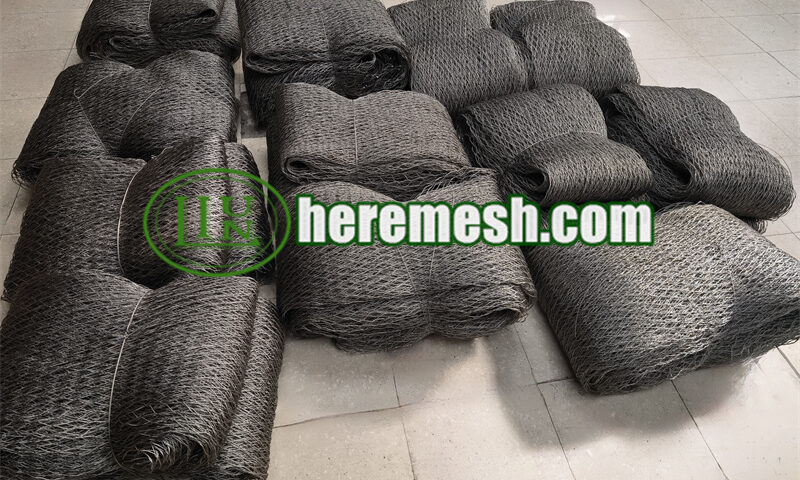Parrot Enclosure Mesh: Air Shipping Order Delivery

Zoo Enclosure Netting Orders Stay Strong: Tariffs Didn’t Stop US Zoos
04/29/2025
Stainless Steel Park Fence Mesh: Safety Meets Aesthetics
05/20/2025Parrot enclosure order details
This week, the production of the customised stainless steel parrot enclosure order from our company was completed and delivered to the destination by air freight. The mesh specification is #1625, and the stainless steel rope mesh will be used for parrot enclosure construction.
The customer was interested in the stainless steel rope mesh and initiated the enquiry by browsing our official website. The customer clearly indicated that he would like to use the stainless steel rope mesh as parrot enclosure. In the communication, we introduced in detail the mesh size, wire diameter, anti-corrosion treatment process and other specific parameters. As the user is particularly concerned about corrosion resistance, and ultimately chose to use stainless steel as a bird aviary.
Our business staff responded in time, according to the special needs of parrot enclosure recommended 304 stainless steel rope mesh. Our company also provides structure schematic diagram and zoo successful cases as reference. After many technical details confirmation and quotation negotiation, the customer finally recognised the professionalism and cost-effectiveness of our products. After the completion of the sample acceptance, the user placed a formal order, followed by additional long-term cooperation agreement. Throughout the process, good product quality to facilitate the transaction to provide effective support.
Understanding the need for parrot enclosure
Parrot enclosure plays a vital role in zoos and bird parks. Mesh is mainly used to ensure animal safety, enhance viewing and meet ecological protection needs. Parrots as highly intelligent birds, strong flight ability and beak destructive force, ordinary mesh is easy to be bitten off . Wire rope mesh can effectively prevent parrots from escaping or being injured due to its high strength and corrosion resistance. At the same time, its flexibility reduces the risk of injury when the birds hit. Therefore, specially designed stainless steel rope mesh has become the preferred material for parrot enclosure. Its high strength, corrosion resistance and flexibility effectively prevent parrots from escaping or being injured. In addition, the use of stainless steel rope mesh, which meets international standards, reduces long-term maintenance costs and avoids the hassle of frequent fence replacement.
Animal welfare
From an animal welfare point of view, parrots need enough space to meet their natural behavioural needs. such as flying, climbing and foraging. Traditional wire cages or welded mesh often have restricted space. The hard metal edges can cause damage to the parrot’s feathers and claws. Stainless steel rope mesh is flexible and smooth, providing a greater range of movement while avoiding scratching the birds. In addition, the silver-coloured metal blends harmoniously with the natural environment, in line with the design concept of ecological displays in modern zoos. The excellent design of the enclosure will not affect the viewing experience due to overly dense mesh or reflections. Stainless steel rope mesh can be customised with different mesh sizes and colours as required. This ensures safety while integrating into the natural landscape and enhancing the overall zoo display.
Endangered parrot protection
For the protection of endangered parrot populations, this type of fencing also provides a safe breeding environment. The high quality rope mesh mimics the natural habitat, reducing the parrots’ stress response and promoting their breeding behaviour. At the same time, the sturdy fencing also prevents outside disturbance, ensuring the health and safety of the parrots. Investing in professional-grade parrot enclosures is therefore not only a basic requirement for zoo operations, but also a demonstration of responsibility for animal welfare and species conservation.
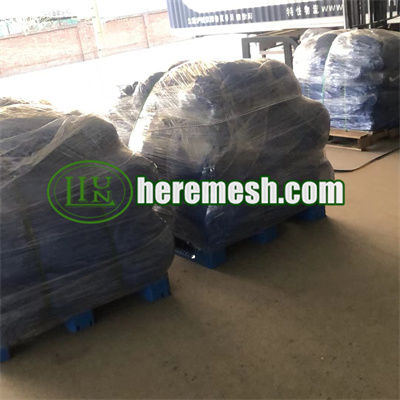
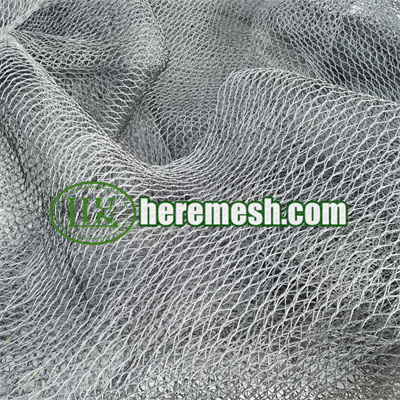
The application of parrot enclosure
As a specialised animal protection facility, parrot enclosure has a wide range of applications and is highly relevant. Stainless steel rope mesh has become the material of choice for parrot fencing due to its advantages. This type of enclosure is not only suitable for large display areas such as zoos and bird parks, but is also commonly used in wildlife sanctuaries, breeding centres and private aviaries. In a zoo environment, mesh provides parrots with space to move around close to their natural habitat. The size of the mesh is precisely designed to ensure that parrots cannot escape while avoiding the risk of getting their heads or claws stuck. The mesh surface process eliminates the potential for heavy metal precipitation, fully safeguarding the health and safety of parrots.
In the field of wildlife protection, the application of parrot enclosure is more ecological significance. Many nature reserves use stainless steel rope mesh to build bird aviary to help artificially bred parrots gradually adapt to the wild environment. In tropical rainforest climates, the enclosure needs to be specially strengthened with corrosion-resistant treatment to cope with the harsh environment. It is worth noting that some special species such as purple and blue macaws require additional anti-climbing designs, as their strong beaks can damage ordinary metal mesh.
The demand for parrot fencing in both the commercial and private sectors is equally specialised. Upscale resorts often use decorative mesh to build interactive parrot experience areas. Integration into the landscape is achieved through customised mesh shapes. Private bird collectors are more interested in the functional extension of their enclosure.
The importance of choosing right parrot enclosure
As highly destructive birds, parrots have very high demands on the strength and safety of enclosure materials. Choosing the right enclosure material is not only a matter of parrot safety and health, but also has a direct impact on the service life and maintenance costs of the enclosure. The wrong choice of material can lead to broken fences, parrots escaping and even injuries to the birds. When constructing parrot enclosure, the mechanical properties, corrosion resistance and long-term reliability of the material must be taken into account.
Safety is the primary consideration
The parrot’s beak is so strong that it can easily bite through ordinary wire or plastic mesh. Therefore, parrot enclosure materials must have extremely high tensile strength. Stainless steel rope mesh is the ideal choice due to its excellent properties. 316 stainless steel ensures that it will not break due to rust or metal fatigue in the long term. If inferior materials are used it may lead to heavy metal poisoning, which can seriously affect their health. Therefore, the safety of the material directly determines whether the fence can really play a protective role.
Weather resistance and service life determine long-term costs
Ordinary galvanised wire mesh may rust and corrode within a few years in wet environments increasing the frequency of replacement. In contrast, stainless steel parrot fencing can remain rust-free for decades even in wet environments, significantly reducing long-term maintenance costs. In addition, stainless steel materials do not deform due to temperature changes, ensuring a stable and long-lasting fence. For bird areas, choosing durable materials means less frequent replacement.
Animal welfare and ecological adaptation
The material should not only be strong and durable, but should also minimise the impact on parrot’s behaviour and psychology. Liulin company offers black oxidised mesh for parrot enclosures to reduce the stress of light reflections on parrots. In ecological conservation projects, fencing even needs to mimic the natural habitat, for example by using black rope netting to fit closer to the forest backdrop and reduce the abruptness of man-made installations. The right materials not only provide physical protection, but also enhance the quality of life for parrots. Ecological materials allow the birds to maintain their natural behavioural patterns even in an artificial environment.
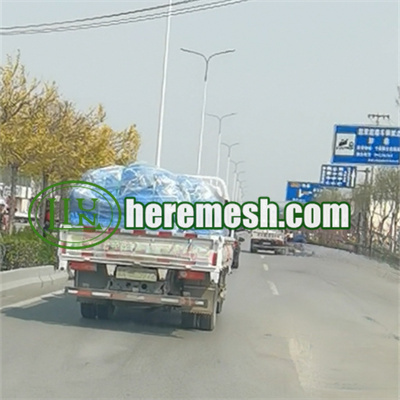
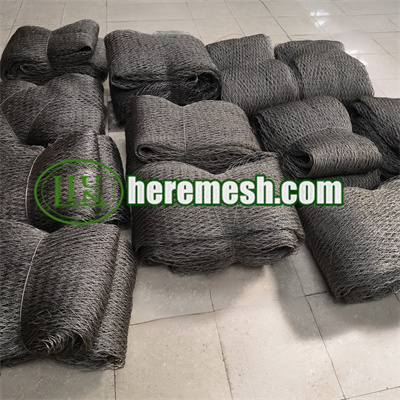
Liulin Parrot Aviary Mesh Specifications Selection
Liulin company has accumulated a wealth of professional experience in the selection of parrot aviary mesh specifications. We are able to provide the most suitable solution according to the special needs of the rearing environment. The following are the key specification selection suggestions:
Material selection: 316 stainless steel is the best
Recommended material: 316 stainless steel, with greater resistance to salt spray and corrosion. Suitable for outdoor and high humidity environments (e.g. tropical, coastal areas).
Alternative options: 304 stainless steel (suitable for dry or inland environments, lower cost, but slightly inferior long-term corrosion resistance).
Wire diameter and mesh opening
Diameter of steel wire: 1.6mm~2.0mm (taking into account the strength and flexibility, too thin is easy to be bitten off, too thick is to increase the weight and cost).
Mesh opening: Recommended 25mm×25mm~50mm×50mm.
For large parrots (e.g. Purple and Blue Macaws): choose 50mm×50mm mesh to ensure that their heads cannot pass through.
Small and medium-sized parrots (e.g. red and green macaws): Choose 25mm×25mm~38mm×38mm to prevent claws from getting stuck.
Juvenile birds or breeding area: need to be encrypted to 20mm×20mm to prevent escape.
Points for structural design
Weaving method: preferred 7×7 or 7×19 strands of stainless steel rope weaving to enhance tensile strength and shear resistance (single wire is easy to be bitten off).
Zoo large display area: 304/316 stainless steel, 2.0mm diameter, 50mm x 50mm mesh opening
Private aviaries/breeding colonies: 304/316 stainless steel, 1.6mm diameter, 38mm x 38mm mesh opening
Tropical sanctuaries: 316 stainless steel and oxide coating, 7 x 19 strand weave
For different application scenarios, Liulin company will provide customised service with differentiated specifications. Parrots have strong beaks and powerful claws, which puts high demands on the enclosure material. Liulin recommends 316 grade stainless steel rope mesh as the preferred material, which has excellent corrosion resistance. In terms of specifications, the mesh size is usually controlled between 25mm x 25mm and 50mm x 50mm. This design prevents larger macaws from escaping and avoids the risk of their heads or claws getting stuck. Wire diameters range from 1.6mm to 2.0mm depending on the size of the parrot, ensuring that the mesh has sufficient tensile strength to withstand the parrot’s gnawing and climbing.
Conclusion
The choice of material for parrot enclosure is not simply a cost trade-off. It is a comprehensive decision involving safety, durability, animal welfare and long-term economic benefits. Investing in a quality enclosure will not only keep parrots safe and healthy, but will also reduce maintenance costs.


